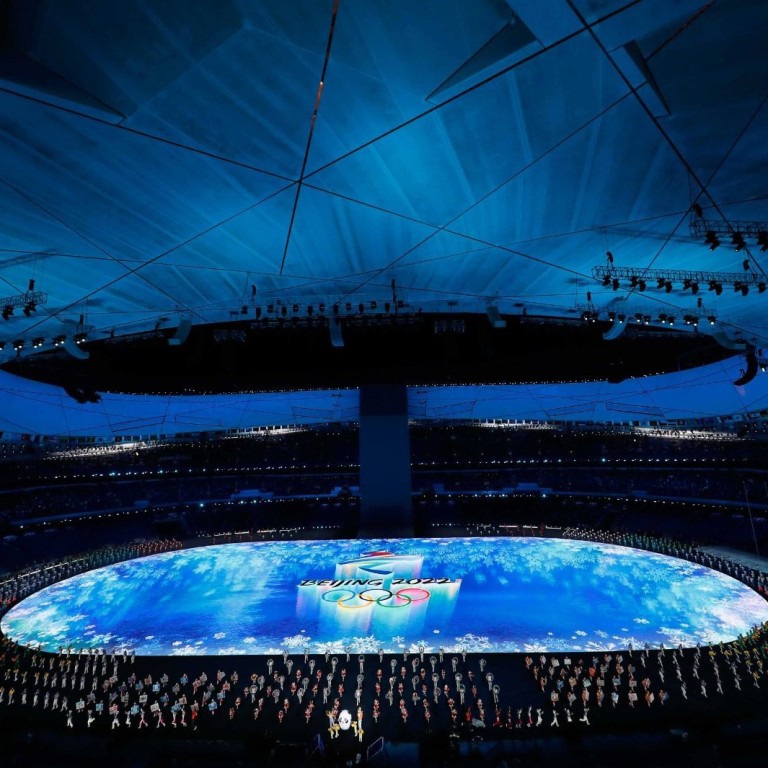
Beijing 2022 opening ceremony serves up dazzling night of tech, light and colour as Xi Jinping opens Winter Olympics amid backdrop of Covid-19 concerns and political tension
- Xi declares the Games ‘open’ after a scaled back ceremony as Beijing becomes the first city to host the Summer and Winter Olympics
- IOC president Thomas Bach calls for world peace while hailing the Beijing Games as the start of a new global movement in winter sports
Beijing put on a spectacular and stirring show of technology and artistry at the opening of the Winter Olympics on Friday as President Xi Jinping presided over a ceremony attended by world leaders and an invite-only crowd on a below-freezing evening in the Chinese capital.
If the breathtaking 2008 Games ceremony was China’s coming out party, Friday’s 2022 gala, both designed by creative muse Zhang Yimou, served to magnify Beijing’s achievement of becoming the only city to host the Summer and Winter Olympics despite the gargantuan challenges posed by an unrelenting coronavirus pandemic.
The ceremony reflected the “simple, safe and spectacular” ambitions of the International Olympic Committee (IOC) and the Beijing organisers, who have spent around US$4 billion on staging the event amid a rise in Covid-19 cases, with the Olympic family sealed off from the rest of China by a “closed loop” system.
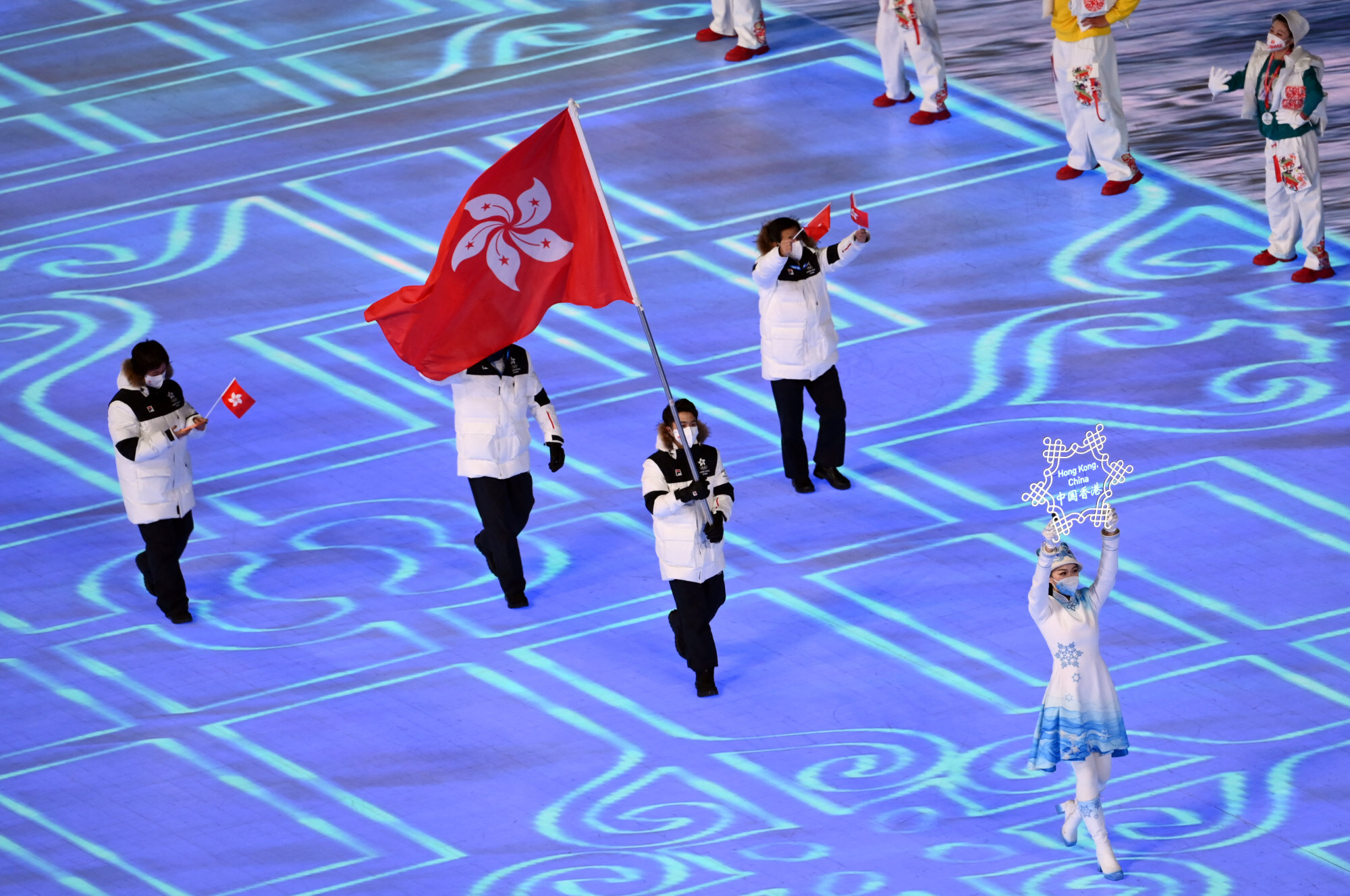
Speed skater Sidney Chu was Hong Kong’s flag-bearer at the opening ceremony and was joined by three officials, with Xi seen applauding as the four made their way into the stadium.

“China is now a winter sport country where over 300 million people are engaged in winter sports in over 2,000 resorts and ice rinks,” Bach said towards the end of the ceremony. “This is an extraordinary achievement and opens a new era for global winter sports.
“It will raise global participation to new levels, benefiting Chinese people as well as winter sports enthusiasts around the world. We can only write this new chapter in sporting history because of our gracious hosts, the Chinese people who we thank wholeheartedly for welcoming us so warmly.”
The show opened with a light spectacle illuminating the darkness as performers swayed with yellow-green fluorescent poles in dandelion formation, symbolising the start of spring in the traditional Chinese calendar.
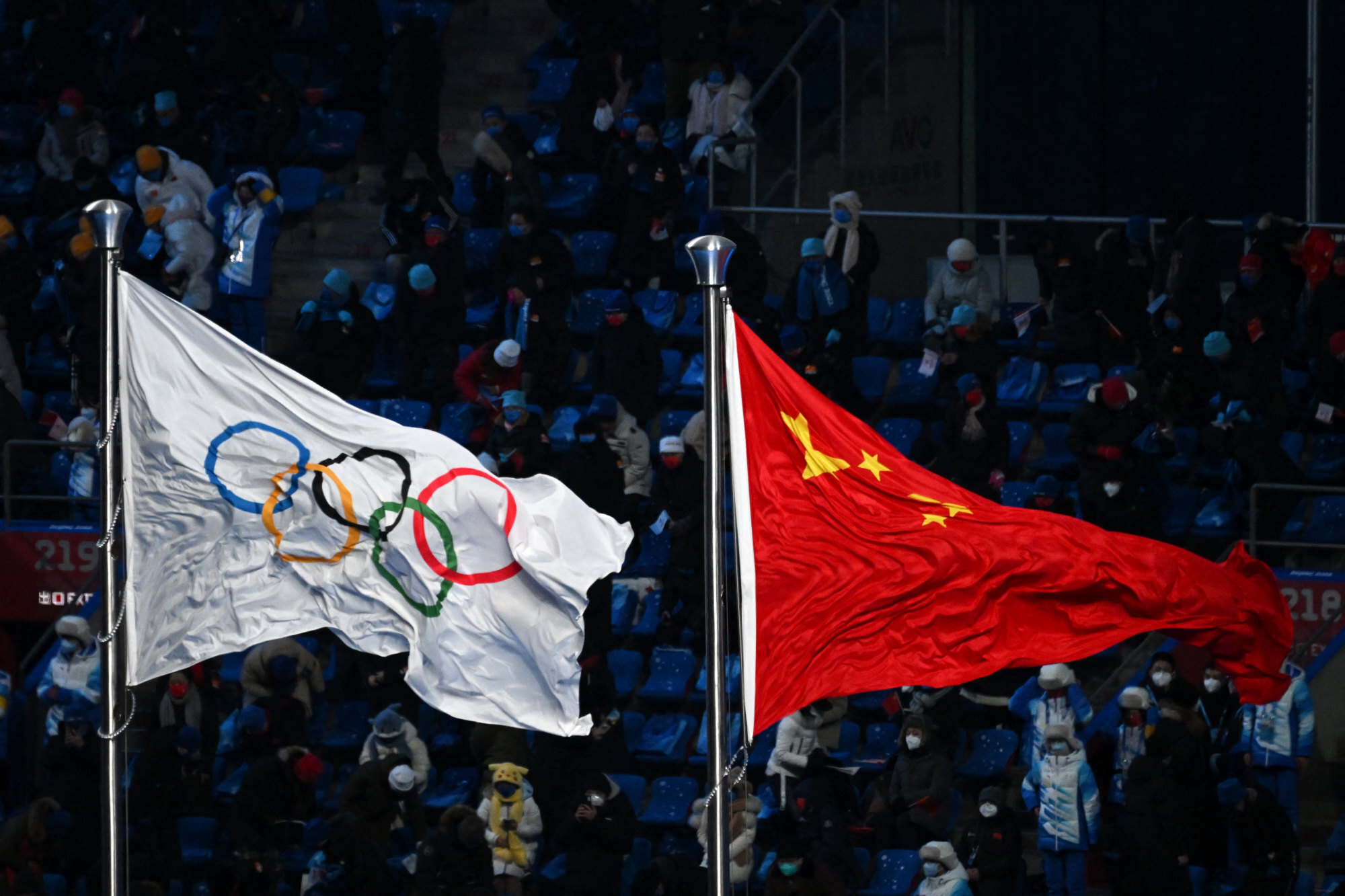
It moved quickly on to the playing of the national anthem with Xi, wearing snow gear in minus 4 degree Celsius temperatures, and Bach standing to attention as the Chinese flag was raised.
A gust of bustling silver water then flooded the stadium, reflecting the vitality of China’s Yellow River, followed by six ice hockey players slamming pucks against an ice wall, shattering the computer-generated apparition to portray “breaking the ice” and fostering peace and understanding.
It was then the turn of the 91 countries and regions to walk into the stadium with their flag, though many teams were represented by only a handful of athletes amid pandemic concerns and some competitors deciding to skip the event in protest or competition the next day. The Games feature 2,900 athletes taking part in 109 disciplines.
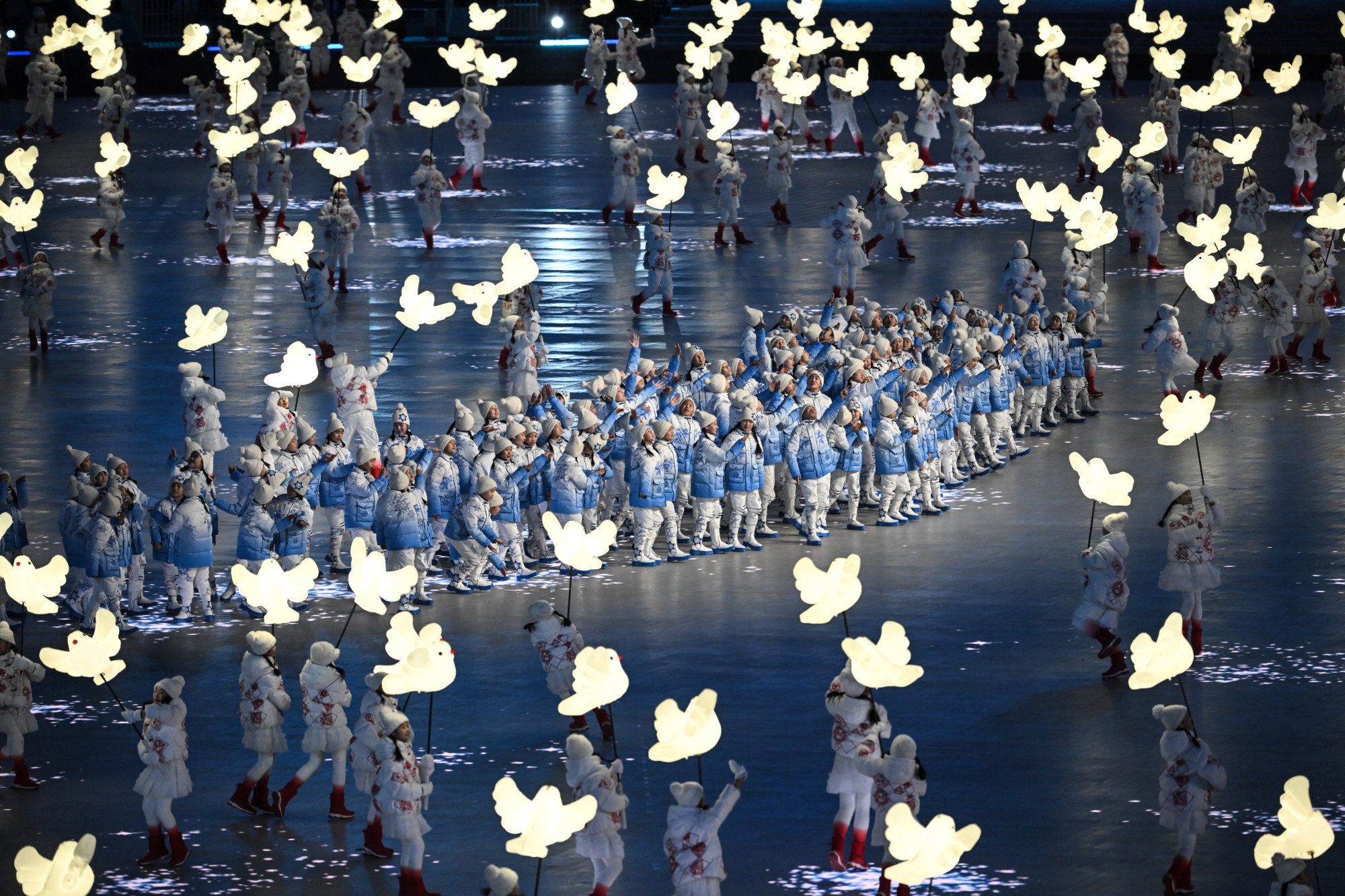
A spellbinding depiction of falling snow wowed the crowd and the millions watching around the world before the speeches by Beijing organising committee chief Cai Qi and Bach.
After a torch relay inside the stadium featuring Chinese Olympic greats, including speed skating pioneer Yang Yang and track sprinter Su Bingtian, the flame was handed to Uygur cross country skier Dinigeer Yilamujiang and Nordic combined star Zhao Jiawen. The duo placed the torch on a giant snowflake-shaped structure featuring the names of all 91 teams taking part before rising high above the crowd to burn until the Games close on February 20.

Another burst of fireworks in the shape of a snowflake and the Olympic rings streamed into the night sky to bring the ceremony to a close.

The United States, United Kingdom, Australia and their allies snubbed the opening ceremony, with their leaders staying away even as their athletes are still allowed to compete.
Activists have also hit out against China over its treatment of Peng. Last year, the Women’s Tennis Association accused retired former vice-premier Zhang Gaoli of sexual assault against the player. Neither Zhang nor the Chinese government have commented on the allegation. Bach has also come under fire for holding a video meeting with the player that many said was staged.
Chinese officials have repeatedly criticised the West for “politicising sport” as the country also battles the highly transmissible Omicron variant of the coronavirus.
In the closed loop system, athletes, officials and other stakeholders are confined to the three Winter Olympics zones of Beijing, Yanqing and Zhangjiakou to ensure any infections coming into the country do not threaten the mainland population.
“I would remind you that we’ve never set a target of zero cases inside the closed loop,” Dr Brian McCloskey, head of the Beijing 2022 Medical Expert Panel, said. “The target is zero spread. And the closed loop is there because that’s what protects the people of China by keeping the domestic population separate from participants coming from around the world.”
On Thursday, 21 new positive Covid-19 cases were detected within the closed loop, compared to 55 a day earlier. Since January 23 until Thursday, 287 positive tests have been recorded among Games-related personnel from a total of 610,000 tests.

“The biggest challenge for the country is to start the 2022 Winter Olympics on schedule under the pandemic,” Timothy Fok Tsun-ting, president of the Hong Kong Sports Federation and Olympic Committee, said. “Especially after the 2020 Tokyo Summer Games had been pushed back for one year because of Covid-19. It has showcased the power and strength of the country in its effort of organising such a sporting extravaganza.”
Apart from Putin, the opening ceremony was attended by the leaders of all five Central Asian countries, where millions of people have ethnic links to China’s Uygur, as well as the leaders of energy-rich Saudi Arabia, United Arab Emirates and Qatar. Also supporting Xi with their presence were United Nations Secretary-General Antonio Guterres, his predecessor Ban Ki-moon, now head of the IOC’s ethics commission, and World Health Organization Director-General Tedros Adhanom Ghebreyesus.
Chief Executive Carrie Lam Cheng Yuet-ngor was unable to travel to Beijing as she battles a Covid-19 surge at home.

Hong Kong alpine skiers Audrey King and Adrian Yung Hau-tsuen are in isolation because of King’s positive Covid-19 test earlier this week with Yung deemed a close contact. King has since returned two negative tests and is expected to take part in her event on February 9. That left Chu as the only athlete to carry the flag for Hong Kong.
“Most other countries have one woman and one man,” Chu said. “I really, really wish all of us could have come out at the opening ceremony together, and prove to the world that, ‘Hey, this is our biggest delegation ever’.”
Speed skater Gao Tingyu and skeleton athlete Zhao Dan were the flag-bearers for China, who are fielding their largest-ever Winter Games squad of 176 athletes. China are competing in all 109 events with data company Nielsen Gracenote predicting the host nation to win 13 medals during the Games, six of them gold.

Taiwanese speed skater Huang Yu-ting, who drew criticism after donning a Chinese uniform on Thursday, was the team flag-bearer.
Glamorous freestyle skier Eileen Gu, born in San Francisco to an American father and Chinese mother, is representing China at these Games and could win at least three gold medals based on her recent world-beating performances.
Among the major sporting battles to be played out during the Games is the men’s figure skating duel between American Nathan Chen and Japan’s Yuzuru Hanyu, who has a huge following in China.

The USA and Canada are expected to battle for gold in the men’s ice hockey while American snowboarder Chloe Kim is hoping to defend the gold medal she won in Pyeongchang four years ago.
China is also keen to depict the 2022 Winter Olympics as the Technology Games, with the country using state-of-the-art equipment to make it a success. The “5G Olympics” will see China allowing users within the three zones of Beijing, Yanqing and Zhangjiakou to receive a strong signal even inside a tunnel with the technology also being used for facial recognition, temperature measurement and registration, among other applications.
The technology, however, has raised fears among some Western nations about Chinese authorities possibly spying on foreign athletes and officials and many have asked their delegations to leave their mobile devices at home and use burner phones.
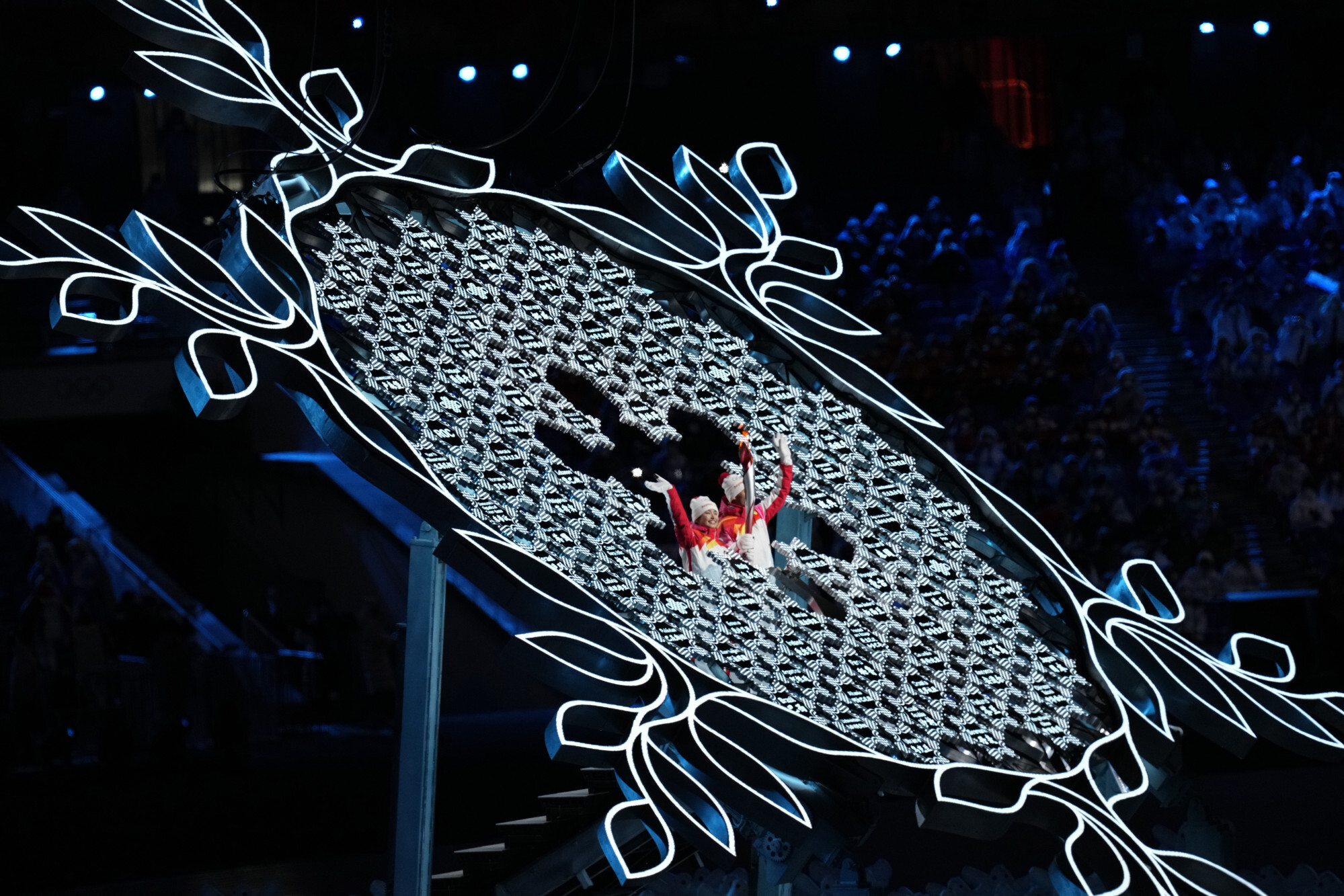
Organisers are also using around 200 snow cannons to create artificial snow for the skiing events in Yanqing. Beijing is using more artificial snow – around 2 million cubic metres of water from a nearby reservoir – than that of Pyeongchang in 2018 or Russia’s Sochi from 2014.
Chinese officials, including Xi, are insisting these are the most “green” Games ever, with five venues from the 2008 Olympics being reused, including the National Stadium and the Water Cube National Aquatic Centre, which is now known as the “Ice Cube”.
Beijing is also using carbon dioxide refrigerants to make ice in four venues, a Winter Games first, and around 85 per cent of closed loop vehicles are energy-saving.

However, some environmental experts are sceptical about the efficiency of China’s efforts to put on a sustainable Games, which includes reforestation programmes and a “climate positive” target.
“[Artificial snow] poses an enormous problem in a basin that is already one of the most water-scarce in China,” Carmen de Jong, a geography professor at the University of Strasbourg in France, said. “How can you then free even more water for snow-making?”
With the opening ceremony going ahead without any glitches, China and the IOC are now hoping attention, like it did during Tokyo 2020, will switch from controversy to the competitive sporting action. Some of the best athletes are ready to conquer the Beijing show on snow and ice.

